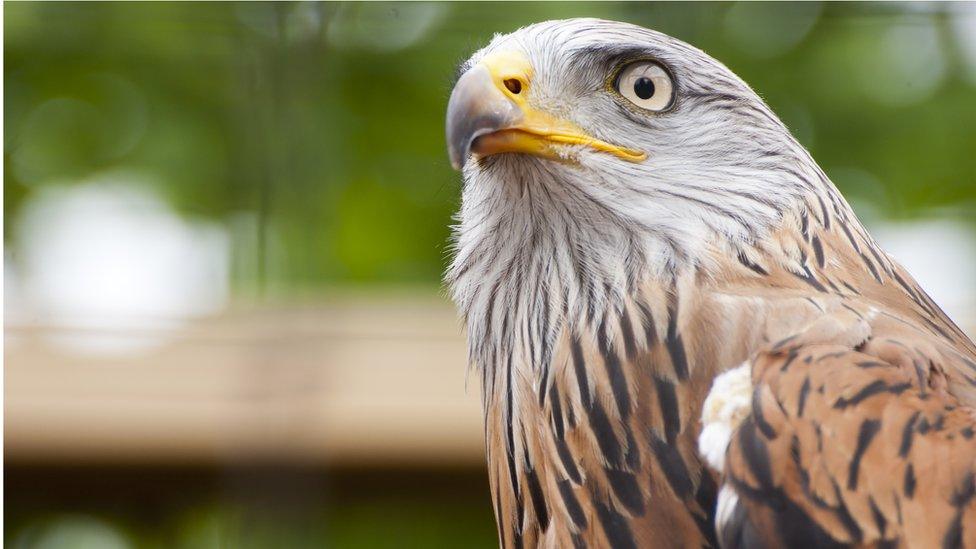Bird pulled from brink of extinction facing poisoning threat
- Published

The red kite (Milvus milvus) is declining throughout Europe
The red kite has become more common in the past 30 years in the UK, thanks to conservation schemes.
But, while numbers of the birds of prey are on the rise, scientists say human factors threaten to derail progress.
Post-mortem tests on wild red kites show many have been poisoned by lead shot, rat poison or pesticides.
The study, published in the European Journal of Wildlife Research, suggests poisoning of red kites may be slowing their rate of recovery in England.
Dr Jenny Jaffe of the Zoological Society of London (ZSL), who worked on the study, said birds of prey, and especially scavengers, eat animals that contain lead shot, leading to lead poisoning.
''That can be changed by changing the shot gun cartridges to non lead, which a lot of countries do,'' she told BBC News. ''And, there is some legislation already in the UK, but it is very limited.''
Another threat - pesticide poisoning - is ''mostly deliberate'', she said, caused by baiting of bird or rabbit carcasses.
''You'll find red kites that are in good body condition that have died very suddenly and where toxicology shows that they have high levels of pesticides,'' said Dr Jaffe.
''It might not per se be focussed on red kites specifically, but the people who put out these poisons are focussed on killing predators of their, for example, game birds or livestock.''
Brink of extinction
In the study, scientists carried out detailed post mortems and toxicological analysis on 110 red kites found dead between 1989 and 2007, when the birds were being re-introduced at four sites in England.
Of these, 32 had been poisoned by rodenticides, other pesticides and lead.
However, the researchers say there are simple ways to prevent poisoning, including:
Best practice in controlling rodents
Tackling the illegal use of pesticides
The use of non-toxic alternatives to lead ammunition.

The red kite feeds mainly on carrion and small mammals or birds
RSPB head of nature policy Jeff Knott described the research as ''a worrying development''.
He said the bird has been at the heart of one of the UK's greatest conservation success stories, going from the brink of extinction to a common sight in many parts of the UK, in the past 30 years.
''Poisons shouldn't always be the first port of call, as there are other methods of rodent control, such as traps, that are effective and reduce the risk to other species,'' he explained.
''It is therefore vital that government continues to fund monitoring schemes to keep a close eye on the impacts that poison is having on other wildlife."
The red kite was saved from extinction in England and Scotland by schemes to re-introduce the bird into the wild.
The UK population has increased in recent decades, and is estimated to number upwards of 3,000 breeding pairs.
The IUCN lists the red kite is listed as Near Threatened in Europe, where it is experiencing a population decline, owing mostly to poisoning from pesticides and persecution, and changes in land-use.
Dr Matt Ellis, of the British Association for Shooting and Conservation, said that while red kite populations are declining across southern Europe, the population in the UK is growing faster than in any other country.
"This is no reason to be complacent and we support evidence-based approaches to tackling the greatest risks to these birds, including the 28% that die from physical trauma such as electrocution from power lines and collisions with vehicles,'' he said.
"Any bird dying from lead poisoning is an avoidable death and we are working to produce and promote best practice guidance on the ways to mitigate these risks. "
He said since red kites scavenge carrion it was important that every conceivable effort was made to collect all shot birds or rabbits.
However, he said with lead poisoning implicated in only a minority of deaths "it would be a scandalous waste of precious conservation resources" to focus on this.
Follow Helen on Twitter, external.